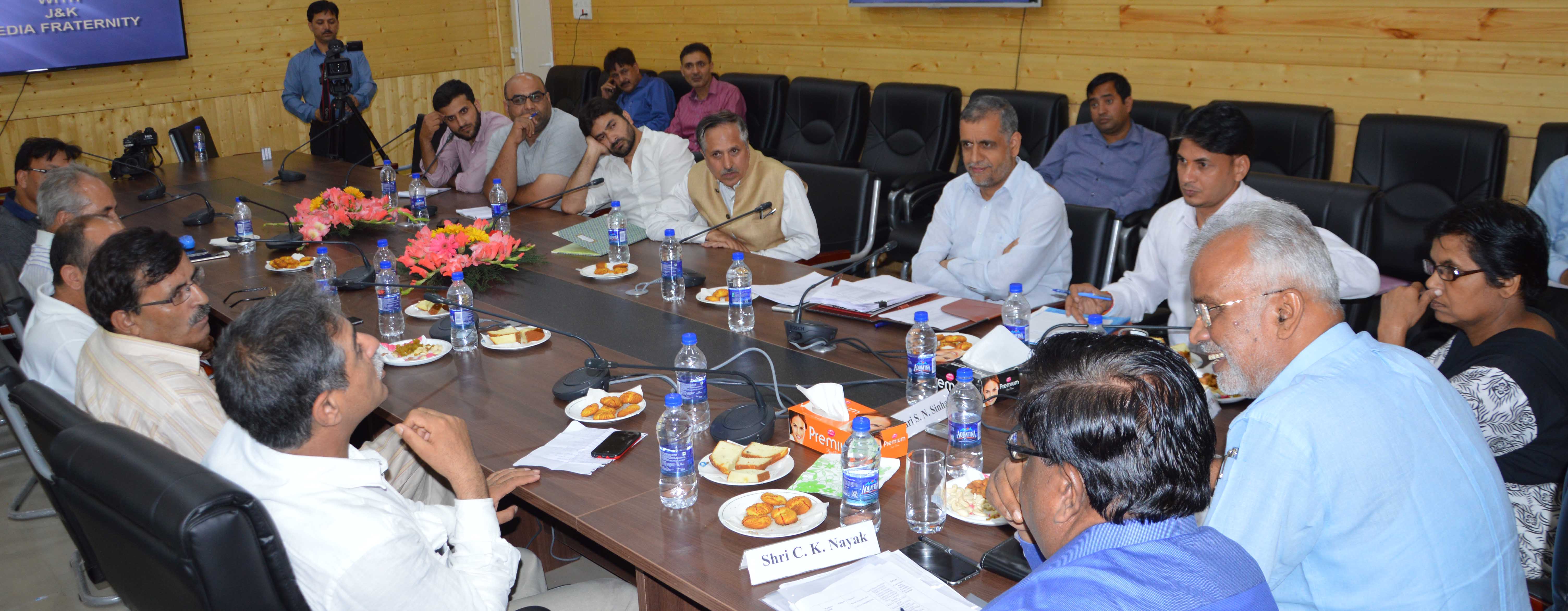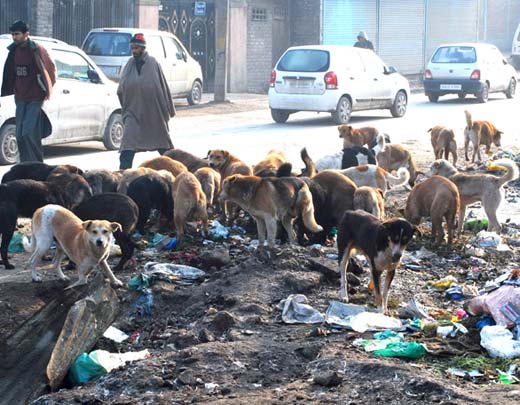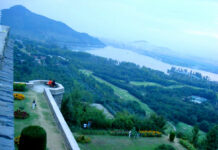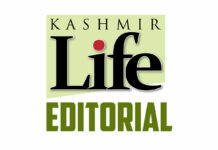Press Council Visit
Kashmir Editors Guild (KEG) was correct in suggesting the Press Council of India (PCI) that the institution must make efforts and salvage its credibility in Kashmir, a place ruled by the Disturbed Areas Act for nearly three decades now. In their long meeting with a visiting sub committee, they pointed out two major things that have direct PCI role.

Firstly, in 1991 the institution made itself available to the state apparatus to malign the Kashmir media. It printed a botched up report on the Kunan case and dubbed the entire reportage misleading and a hoax. That report was used to salvage the reputation of state apparatus in a crime that was indefensible.
Secondly, the editors asked too many questions over the PCI failure in not even helping the Kashmir press corps in getting the cases of 13 journalists investigated. These journalists fell to the bullets during militancy. Though the police routinely registered cases, not even in one case has there been a formal charge-sheet, so far.
They also pointed out that PCI has not been so supportive of the media in Kashmir in getting a hassle free virtual access to news and in serious security situations, permission to physical movement. They genuinely put Kashmir a greenhouse where democracy’s humidity and the temperature is maintained by the executive.
But the editors who are publishing the main popular print media in Kashmir did not tell the PCI that since the institution maintained a questionable distance, the media in Kashmir will be auto-piloted. They suggested the Council members identify even a single instance in last three decades in which the fundamentals of journalism have been compromised. They also sought investigations into the bogey of “funding” that vested interests have been pushing between Srinagar and Delhi and vice versa.
At the same time, however, the editors suggested PCI get into the labyrinth of media management by central and the state governments. They offered the visiting team details of the method employed to choke the media and deprive them of their rights. For the single reason of sustaining the idea of Kashmir, they said the PCI will have to play its role in addressing the dangerous dichotomy that is at play in Delhi and Srinagar to throttle the voice of the marginal societies like that of Kashmir. They suggested the Council be slightly more sensitive towards the issues of Kashmir media because its reportage revolves around the life of people and not the politics of people as is prevalent in other places.
Dogged City
Off late, Tasaduq Mufti, the ace photographer of the Omkara fame, has formally joined the governance system. It came within days after the Election Commission of India postponed the South Kashmir Lok Sabha election in which he was the official candidate.

Currently managing the public grievance of the Chief Minister, his sister, Mufti Jr sent a detailed letter to the Srinagar Municipal Commissioner. He said that the city of Srinagar has the population of dogs at around 19,000 and they are responsible for nearly 16000 dog bites in last three years.
The fact is Mufti Jr has been given a very conservative estimate. The fact is the number of dogs in Srinagar and the dog bites reported a year are much higher. Perhaps, he has not been told that at various places in the periphery of Srinagar, these dogs have led to the death of various cattle heads in last two weeks and the reason rabies.
While it is a fact that Srinagar as the City of Kashmir, Shehr-e-Kashmir is merely surviving, especially after September 2014 floods, the crisis has now started moving towards peripheries. SMC, it is well known in driving hundreds of dogs on daily basis to the remote villages. This must push the government to have a wide angle policy on the dog population rather than the exchange of letters.
Policy Deluge
This week Chief Secretary B B Vyas reviewed the implementation of the Rs 1500 crore Jhelum & Tawi Flood Recovery Project (JTFRP). The project started in the aftermath of September 2014 floods aims at supporting the recovery efforts and increased disaster resilience as well as increasing the capacity of the government to respond promptly and effectively to any such future disaster.

It has seven components: (1) Reconstruction and strengthening of critical infrastructure; (2) Reconstruction of roads and bridges; (3) Restoration of urban flood management infrastructure; (4) Restoration and strengthening of livelihoods; (5) Strengthening disaster risk management capacity; (6) Contingent Emergency Response; and (7) Implementation Support. It focuses on restoring critical infrastructure using international best practice on resilient infrastructure.
The review meeting was informed that the project implementation is on track and several of its components are being given focused attention. It has been almost three years since the mighty deluge inundated most parts of the valley. Since then not much has been done to avert such an occurrence in future. The pace of works centered around disaster management is painfully slow. The much-needed dredging of Jhelum and deepening of the flood channels has hit many roadblocks intermittently.
If a project owned by the World Bank, which is known for its best practices and project management acumen, is still at the tendering process stage, one can imagine the fate of other such projects being taken up by the cash starved state. Disasters don’t arrive with intimation. It is high time that the Government commits efforts and resources to disaster mitigation initiatives so that September 2014 tragedy is not repeated again.
The J&K government has already set up Economic Reconstruction (ERA). It is exclusively meant for managing the multi-lateral function that also includes Asian Development Bank and World Bank. Though it has completed chain projects in last few years, nobody has tried to get into the system and see if it has helped us copy some of the best practices, the sole aim of creating it. It is high time go for this introspection so that we create developmental experts and not parasites.









